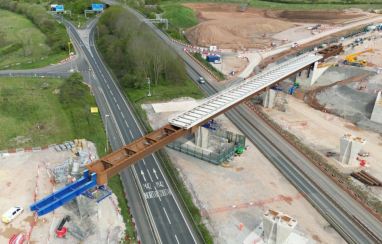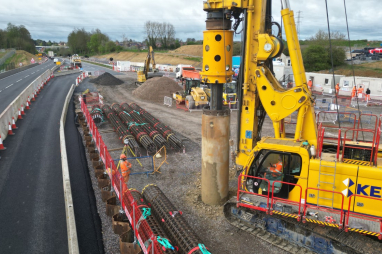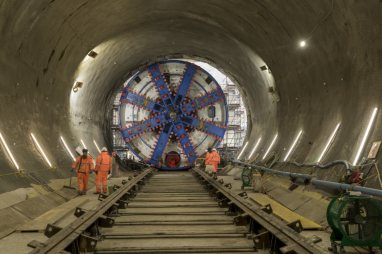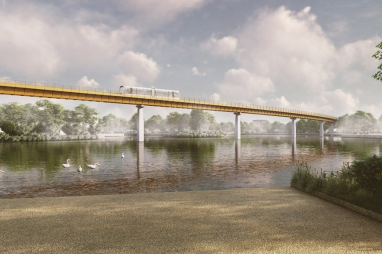- reviews on air jordan outlet
- nike lebron x nike pink green hair women 2017 DM7597 - 100 Release Details - StclaircomoShops - scarpe nike air max silver metallic
- Air Jordan 11 Retro Cool Grey 2021 Cool Grey , IetpShops , Michael Jordan In The "White Cement" Air Jordan Retro IV (4)
- where to buy air jordan shoes in dubai Low Reverse Liverpool DQ6400 , 300 Release Date - SBD - mens nike shox red and white color chart 6500
- adidas adi ease amazon prime phone
- air jordan 1 mid chicago 2020 554724 173
- air jordan xxxv cq4227 004
- air force 1 shadow
- 554725 113 air jordan 1 mid white black 2020 for sale
- nike air force 1 low white gold dc2181 100 release date info
- Home
- News and analysis
- Info hubs
- Events
- Video
- Case Studies
- About us
- Magazine
- Advertising
Produced for the industry by the Association for Consultancy and Engineering
News
Work starts on year long HS2 viaduct deck slide
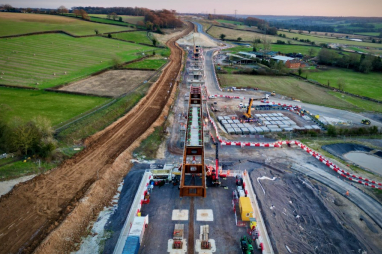
Engineers have begun a delicate job that will see almost half a kilometre of bridge deck slid into position over the next year, high above the Misbourne Valley in Buckinghamshire.
The work is seeing HS2’s innovative Wendover Dean Viaduct entering a critical new stage of construction.
The 450m-long viaduct will be the first major railway bridge in the UK to be built with a ‘double composite’ approach, which uses significantly less carbon-intensive concrete and steel than a more traditional design - and has allowed HS2 to halve the amount of embedded carbon in the structure.
It is one of 50 major viaducts on the HS2 project – which is designed to improve connections between London, Birmingham and the north while freeing up space on the most congested southern end of the existing West Coast Main Line.
Instead of using solid pre-stressed concrete beams to form the spans between the viaduct piers, the double composite structure uses two steel beams sandwiched between two layers of reinforced concrete to create a lightweight and super strong hollow span.
Due to the length of the viaduct, the deck is being assembled in three stages, ranging from 90m to 180m sections, with each one pushed out from the north abutment before the next section is attached behind it.
This painstaking process means that the weight of the deck will increase with each push, up from an initial 590 tonnes this week to 3700 tonnes by the end of the year.
Tomas Garcia, HS2’s head of civil structures, said: “Double composite structures maximise the combined strength of steel in tension and concrete in compression.
“This approach has been tried and tested around the world and it’s great to see it applied on this scale for the first time in the UK at Wendover Dean.
“Once complete, HS2 will help enhance the existing rail network by freeing up capacity on the busy West Coast Main Line and almost halving journey times between London and Birmingham.
“This viaduct will play a crucial role enabling those faster and more reliable services – and I hope it will also inspire other projects around the UK to consider this innovative approach to construction.”
The viaduct is being built by HS2’s main works contractor, EKFB - a team made up of Eiffage, Kier, Ferrovial Construction and BAM Nuttall – with the manufacture and installation of the beams being led by specialists at Eiffage Metal.
A winch is used to push the deck forward at a speed of around nine metres per hour, sliding across Teflon pads to reduce friction – a material usually found to the surface of a non-stick frying pan. It is the longest deck slide on the HS2 project to date.
At this point in the Chilterns the railway will be on a slight gradient, so to help maintain control, the deck – which will eventually weigh the same as 264 double-decker buses - is being pushed slightly uphill, with the finish point approximately 1.8m higher than start point.
James Collings, EKFB’s senior engineer, said: “The project team has reached a fundamental milestone in the build of this industry-leading viaduct.
“We’re progressing well with the first-of-three steel launches being conducted this year and already looking forward to seeing this viaduct come to life.
“Along with our supply chain partners, Eiffage Metal, we’re proud to be delivering this viaduct safely and to programme.”
EKFB worked with their design partner, ASC (a joint venture between Arcadis, Setec and COWI) and architects Moxon on the double composite approach which was inspired by structures on the French high speed TGV network.
The approach is set to cut the carbon footprint of the structure by 56% – saving almost 13,000 tonnes of embodied carbon – and helping HS2 achieve its goal of halving the amount of embedded carbon in construction.

